How muscles work comes down to their movement and the planes which this movement happens. The only thing that a muscle can do is contract (shorten), acting on a joint. That’s it! By shortening its length a muscle can bring two points closer together! A muscle can remain contracted as those two points separate, controlling and slowing the release!
Flexion and Extension
Let’s use the biceps as an example, it’s easy to visualize. One end of the bicep attaches to the forearm, then crossing the elbow the other end attaches up by the shoulder. When the bicep contracts, point A and point B get closer together. In other words, when your bicep contracts it brings your hand to your shoulder! Easy! This is an oversimplification (your biceps main function is actually supination of the forearm which is simply turning your palm out as your arm raises). When a muscle brings two points together in this manner we call it Flexion! Now although gravity will bring your hand back down the bicep will remain contracted so you can control your arm as it falls back to your side.
Muscles don’t push, they only pull, so the question is once we flex a joint how do we bring it back down without gravity!? All muscles have opposing muscles on the other side of a joint. The opposite muscle in this example is your triceps! When your triceps flex it will bring your hand back down to your side. When muscle contracts and pulls two points APART we call it Extension. So together, your biceps will FLEX your elbow, your triceps will EXTEND your elbow! Elbow flexion and extension! Simple! When we are analyzing a muscles functions it becomes intuitive. We can simply look at the direction the fibers are going and the attachment points and that’s what it will pull on!
Abduction and Adduction
When we raise our arms or legs straight out to the side we call this abduction. An easy way to remember this is to think about aliens ABDUCTING you, taking you AWAY. Just like flexion and extension, we need muscles on the opposite side to help pull our arms or legs back towards the body. Bringing a limb back towards the body is called adduction.
Internal and External rotation
When we rotate a limb in-place away from the body we call this external rotation. When we rotate a limb towards the body it is internal rotation. If you were to grab a doorknob with your right hand and turn it clockwise, this would be external rotation at the wrist. If you were to turn the doorknob counter-clockwise this would be internal rotation. Pretend you’re standing up with a piece of paper under your right foot. If you were to twist this paper with your right foot clockwise this would be external rotation of your leg. If you were to twist this paper with your right foot counter-clockwise this would be internal rotation of your leg.
Abduction and adduction occur in the frontal plane of movement. Flexion and extension occur in the sagittal plane of movement. Internal and external rotation occurs in the transverse plane of motion.
Planes of Movement
Now we are going to discuss planes of movement. This can get a little tricky but I will help you visualize this.
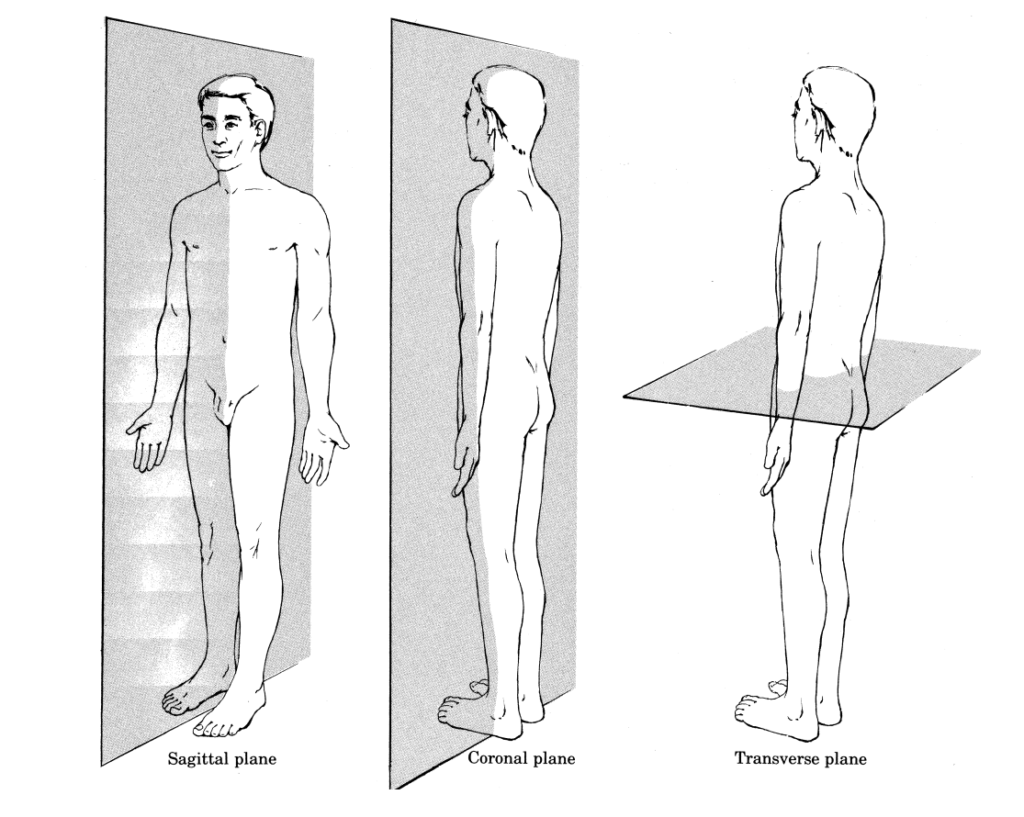
Sagittal Plane
Imagine you are standing in a narrow hallway with just barely enough room to face down the hall. What kind of exercises could you perform? A squat? A curl? A front shoulder raise? Hamstring curl! Triceps push-down! This is a plane of movement. This is called the Sagittal Plane! Now here’s where it gets tricky, flexion and extension are the terms used to describe a muscles function IN THE SAGITTAL PLANE!
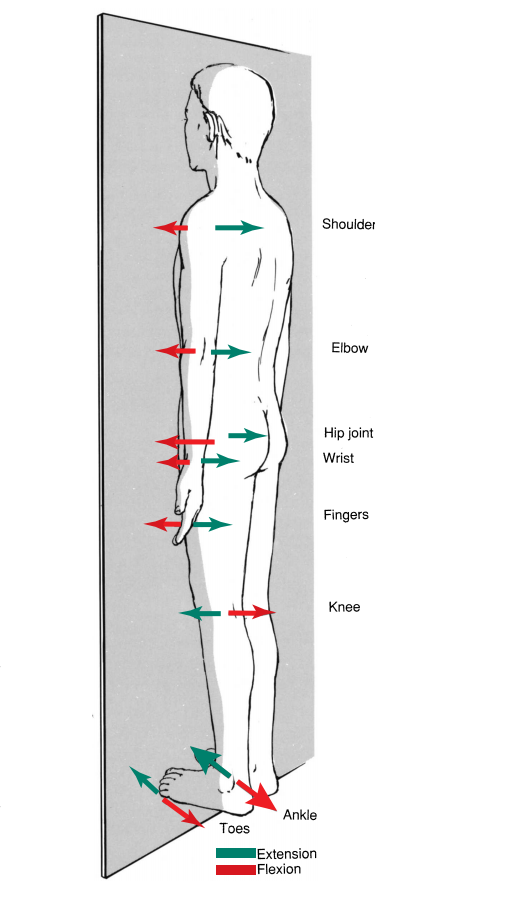
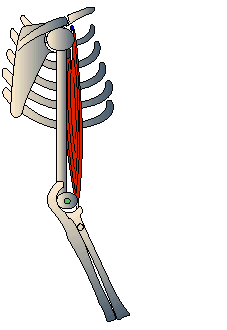
Frontal Plane
Let’s Imagine that you turn and the wall is behind you, and in front of you, what exercises could you perform? Side raises with your arms? Side raises with your legs? You can bend to the side, from the waist, with your head. This is called the Frontal plane! In this plane, when a point is heading away from your body’s mid-line, we call is Abduction. Like an alien is abducting you AWAY! When a point is brought back towards the mid-line, we call it ADDuction! Abduction and adduction are the movements in the FRONTAL plane. To recap, when we are in the SAGITTAL plane, movements are called flexion and extension. When we are in the frontal plane, movements are called abduction and adduction!
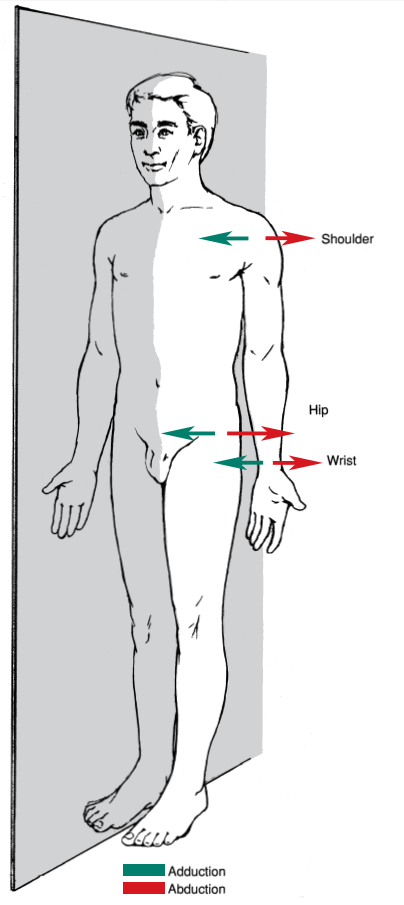
Transverse Plane
The last plane of movement is called the Transverse plane. The Transverse plane is where rotational movements occur. Rotating your wrist, rotating your arm. Turning your head side to side in place. Twisting your waist, turning your legs in and out. Rotation occurs in the Transverse plane!

Scapular Plane
Its interesting to note, that your shoulder blade has its own set of movements. These movements are:
Scapular elevation, or bringing your shoulder blades straight up
Scapular depression, or bringing your shoulder blades straight down
Protraction, which is rounding your shoulders forward, like during a pressing movement like a push up
Retraction which is pulling your shoulder blades together into your spine
Downwards rotation, which happens when you pull your arms down
Upwards rotation, which occurs as you lift your arms straight up
Anterior tipping, or when your shoulder blades roll up over your shoulder girdle
Posterior tipping, or when your shoulder blades get sucked into your back at the bottom
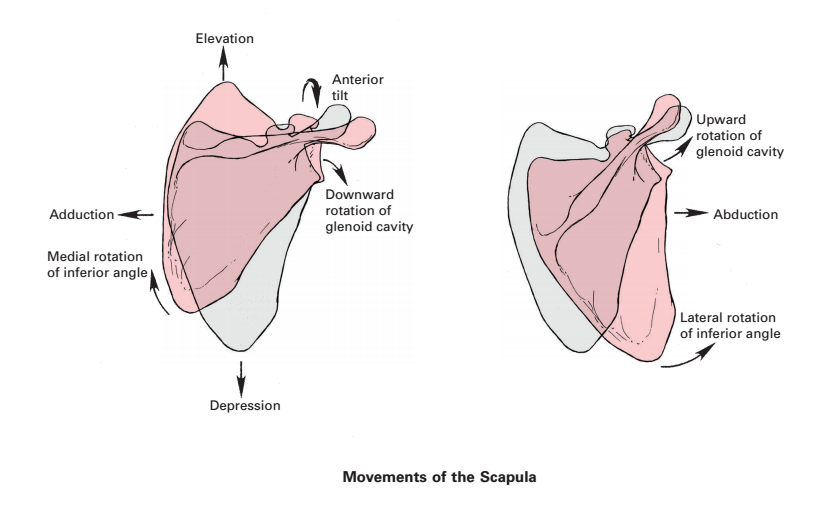
So What?
SO WHY IS THIS IMPORTANT!? Well if we want to exercise a muscle WE JUST PERFORM ITS FUNCTION AGAINST RESISTANCE! To stretch a muscle WE JUST REVERSE ITS FUNCTION! MIND BLOWN!!! This is how exercises are created. This is how you can create your own exercises!
These illustrations are from Florence Kendalls Muscles testing and function. The GIF was pulled from google, and is from Colorado State University! All illustrations are purely educational.

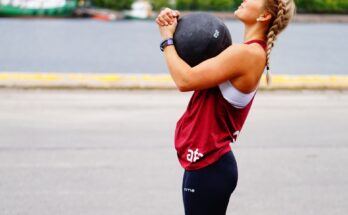
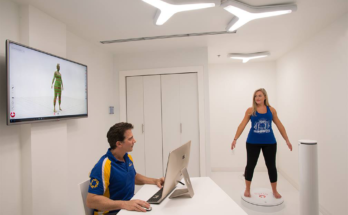
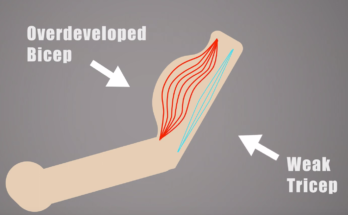
This was THE BEST ex-Lantau on of the different planes I’ve seen. I’ve really been struggling and this cemented it. Thank you!!!